 Your new post is loading...
 Your new post is loading...
So how can you keep up-to-date with all the latest and breaking social media news without sacrificing too much of your time? In this post, we’ll share some tools, tips, and tricks to help you stay up to date with social media news in just 10 minutes a day.
In addition to giving you a weather update whenever you need it, The Weather Channel is known as an unapologetic defender of the idea, backed by basically the entire science community, that climate change is real, and a real threat to life on earth as we know it. It is unsurprising then, that the front page of its digital site would address President Trump’s decision to pull out of the Paris climate accord, announced today. The way it did, it, however, is a work of art. It starts in a straightforward enough manner, with a main story whose headline reads “Trump Pulls U.S. Out of Paris Climate Agreement; What That Means.” That may be the point when you notice that the group of stories below are all about climate change, and that the atypical headlines of seven of them collectively send an unequivocal message. Put them all together, and this is what you get: “So, What Happens to Earth Now? Still Don’t Care? Proof You Should …and More Proof… …and Even More Proof… …Or the Imminent Collapse of a Key Ice Shelf… …or Antarctica Turning Green… …or California’s Coast Disappearing Into the Sea…”...
Good things can happen when a crowd goes to work on trying to figure out a problem in journalism. At the same time, completely crowdsourced news investigations can go bad without oversight — as when, for example, a group of Redditors falsely accused someone of being the Boston Marathon bomber. An entirely crowdsourced investigation with nobody to oversee it or pay for it will probably go nowhere. At the same time, trust in the media is low and fact-checking efforts have become entwined with partisan politics. So what would happen if you combined professional journalism with fact checking by the people? On Monday evening, Wikipedia founder Jimmy Wales launched Wikitribune, an independent site (not affiliated with Wikipedia or the Wikimedia Foundation) “that brings journalists and a community
of volunteers together” in a combination that Wales hopes will combat fake news online — initially in English, then in other languages....
Narrative gravity is like confirmation bias, “the tendency to search for, interpret, favor, and recall information in a way that confirms one’s beliefs.” But with narratives, it’s less about personal beliefs and more of a bandwagon effect, where everyone processes and interprets information through a framework that is both easily digestible and broadly accepted. Narrative gravity is what makes a startup’s story clock tick. Narrative gravity exists beyond tech. It’s why Senator John McCain is still considered a maverick and why Tiger Woods’ big comeback is always right around the corner. The gravitational pull of a prevailing narrative is hard to resist....
What can this small chapter tell us about what’s to come? That Trump will be what columnist Frida Ghitis of the Miami Herald calls “the gaslighter in chief” — that he will pull out all the stops to make people think that they should believe him, not their own eyes. (“Gaslighting” is a reference to the 1940s movie in which a manipulative husband psychologically abuses his wife by denying the reality that the gaslights in their home are growing dimmer and dimmer.) “The techniques,” Ghitis wrote, “include saying and doing things and then denying it, blaming others for misunderstanding, disparaging their concerns as oversensitivity, claiming outrageous statements were jokes or misunderstandings, and other forms of twilighting the truth.”...
“Slightly disconcertingly, Lewis says he is “so thrilled” by the controversy. This is not because American voters were misled but because Facebook and Google have been embarrassed and forced to reconsider the complex algorithms they deploy to present news articles to their users. It’s a matter of schadenfreude. Lewis has spent much of the three years since he became chief executive at Dow Jones and publisher of the Wall Street Journal “badgering away” at Google and Facebook, trying to persuade them to change their news distribution methods. “We kept warning them, saying ‘This is an accident waiting to happen – you are treating fake news in the same way as you are treating Wall Street Journal news. This is going to end up biting you.’ And so here it is, biting them!”...
We — John Borthwick and Jeff Jarvis — want to offer constructive suggestions for what the platforms — Facebook, Twitter, Google, Instagram, Snapchat, WeChat, Apple News, and others — as well as publishers and users can do now and in the future to grapple with fake news and build better experiences online and more civil and informed discussion in society.
Key to our suggestions is sharing more information to help users make better-informed decisions in their conversations: signals of credibility and authority from Facebook to users, from media to Facebook, and from users to Facebook. Collaboration between the platforms and publishers is critical. In this post we focus on Facebook, Twitter, and Google search. Two reasons: First simplicity. Second: today these platforms matter the most.
We do not believe that the platforms should be put in the position of judging what is fake or real, true or false as censors for all. We worry about creating blacklists. And we worry that circular discussions about what is fake and what is truth and whose truth is more truthy masks the fact that there are things that can be done today. We start from the view that almost all of what we do online is valuable and enjoyable but there are always things we can do to improve the experience and act more responsibly.
In that spirit, we offer these tangible suggestions for action and seek your ideas.
Google has agreed to fund a project to develop automated fact checking tools amid anger over the prevalent of fake news websites during the US presidential election.
UK fact checking organisation, FullFact, has announced it has been awarded €50,000 (£43,000) by the tech giant’s Digital News Initiative to build the first “fully automated end-to-end fact checking system”.
In a statement, FullFact explained that the system will have two main features.
One will inform readers if something reported as fact has already been proven inaccurate.
The other mode will fact check claims automatically using Natural Language Processing and statistical analysis in real-time – something FullFact said has never been done before – by highlighting the text and having a factbox appear when the user hovers over it....
Paul Horner is a professional fake news writer, whose completely made-up story about the Amish committing their vote to Trump got over 134,000 likes on Facebook; his story about Obama signing an executive order to invalidate the election results has over 250,000 likes. This week, The Washington Post’s Caitlin Dewey interviewed Horner--who is stunned that his work gets accepted as true. “I think Trump is in the White House because of me. His followers don’t fact-check anything -- they’ll post everything, believe anything. His campaign manager posted my story about a protester getting paid $3,500 as fact. Like, I made that up. I posted a fake ad on Craigslist… I thought they’d fact-check it, and it’d make them look worse. I mean that’s how this always works: Someone posts something I write, then they find out it’s false, then they look like idiots. But Trump supporters -- they just keep running with it! They never fact-check anything!”...
Digital news continues to evolve, pushed by a variety of innovations in recent years, from groundbreaking new technologies like virtual reality and automated reporting to experiments on social platforms that have altered campaign coverage. As journalists and media practitioners gather for the annual Online News Association Conference, here are 10 key findings from recent Pew Research Center surveys and analyses that show how these rapid digital shifts are reshaping Americans’ news habits...
Google announced that it will now label fact-checking articles with the new Fact Check tag in Google News on the web and in the Google News & Weather application on iOS and Android. The tag will help users access fact-checking articles related to major news stories, starting in the U.S. and the U.K.
With this update, when users tap the arrow to see more about a particular news story, in addition to seeing associated articles labeled with tags such as “Opinion” and “In-Depth,” they may also see associated articles marked with the Fact Check tag. Users can tap these articles to read fact-checking information associated with the original story.
In a blog post, Richard Gingras, head of news at Google, explained:
Google News determines whether an article might contain fact checks in part by looking for the schema.org ClaimReview markup. We also look for sites that follow the commonly accepted criteria for fact checks. Publishers who create fact-checks and would like to see it appear with the “Fact Check” tag should use that markup in fact-check articles. For more information, head on over to our help center....
The 18-24 crowd has used the internet as its primary source for news for several years. Now it is specifying “social media” as its main source of news, with that niche overtaking television for the first time. The information comes from a study done by The Oxford University Reuters Institute for the Study of Journalism. It looked at consumers of news and information around the world for its “Reuters Institute Digital News Report 2016.” This is the fifth year it has issued such a report. It’s a fascinating read. 28 percent of 18-24 year-olds say social media is their main source of news, compared to 24 percent who cite television. Since 2013, the number of people in the US who say they get their news from social media has doubled—46 percent now use social media for news....
It was early evening in Politico’s newsroom, four days before the Iowa caucuses. Reporters were working sources and checking TV screens as a presidential debate was about to get under way. But tonight, January 28, Politico’s biggest story was about itself. Outside news organizations were reporting a massive, unexpected overhaul of the company’s leadership. Now executives were scrambling to respond. In a glass-enclosed office at the far end of the newsroom, CEO Jim VandeHei was hunkered down alongside chief operating officer Kim Kingsley and chief revenue officer Roy Schwartz, hurriedly crafting a statement announcing that they—along with marquee reporter Mike Allen—were leaving the company. After months of behind-the-scenes drama, Washington’s most successful media partnership in a generation was busting apart. And all the players had to get their stories straight....
|
Fresco is a lot like Uber. But unlike similar apps where you request a car, takeout, or a even a dog walker, Fresco puts a call out for a photojournalist. A newsroom posts a request for video of, say, a crime scene, and a Fresco user in the area can accept, take a video of it, and upload it to Fresco. If the news outlet uses it, the Fresco user gets paid $50.
TV news stations across the country are using the app, but Fresco is particularly appealing to KTBY, a station in Anchorage, Alaska. Alaska is a big state, and many of KTBY’s viewers live in remote villages that are hours away by plane. It’s hard to cover those communities without spending a ton of money and time. In a Fresco promotional video, Scott Centers, COO of Coastal Television Broadcasting Company, which owns KTBY, marvels that Fresco offers an affordable alternative.
Apparently fake news is a thing in France, too. And apparently it was rampant during the run up to the just concluded presidential election. Emmanuel Macron won by a large margin but it seems there was a lot semi-truths being thrown about. To help combat the spate of fake news surrounding the election, J. Walter Thompson Paris worked with French news organization Liberation to create CheckNews.fr , a search engine staffed by actual human journalists for three days leading up to the election. These journalists answered any search query made with links to multiple sources providing truthful answers to each query....
If there is one thing that Americans can agree on, it’s just how polarized they are. Almost three-quarters of Americans – including both Democrats and Republicans – think the strained relationship between President Donald Trump and the news media is impeding their access to important political news, according to a new Pew Research Center survey. "Both politicians and the media have an interest in people getting political information. If Americans are concerned, that’s definitely something they want to be aware of.” -Michael Barthel The lack of even a partisan split was reminiscent of a survey done late last year about the confusion that fake news was causing Americans, according to Michael Barthel, a Pew Research Associate who helped conduct both surveys. “We found very few differences across groups in their concerns about fake news,” he said. “The evidence of polarization seem to be these things on which Americans can agree.” Ninety-four percent of respondents said they have heard about the tensions between Trump and the media and 83 percent said the relationship is unhealthy....
Today the New York Times rolled out the big guns in the battle for truth. There, in Jim Rutenberg’s latest Mediator column, were two digits the likes of which I have never seen in the Grey Lady. Footnotes, people. Honest-to-God footnotes. The footnotes were there to annotate a story about the Trump administration’s disregard for the truth: ‘Alternative Facts’ and the Costs of Trump-Branded Reality. By necessity, that story referenced two of the administration’s newly minuted “alternative facts”, a.k.a. lies. The first of these was the claim by Sean Spicer, the new press secretary, that more people had used DC’s Metro system the morning of Trump’s inauguration than had used it the morning of Obama’s 2013 inauguration. The second was the President’s accusation that tensions between Trump and the intelligence community were caused by the meddling media....
The Reuters Institute For The Study Of Journalism recently released a report showing that trust levels in news vary hugely by country. Trust is highest in affluent Western European nations, primarily due to the presence of well-funded public service broadcasters. 65 percent of people in Finland agreed that "you can trust most news most of the time". In the United States, the epicenter of the fake news storm, trust was far lower at just 33 percent. This chart shows the % agreeing "you can trust news most of the time" in selected countries.
Online, your product is unbundled. You get 10 words. Or 8. Or maybe 13, like I used above, to market your work. Digital success is like selling a newspaper story by story rather than day by day or week by week. And in selling that day’s paper, by subscription or newsstand, there’s just less urgency to make the headline awesome on that 150-word story buried at the bottom of page 11. Sections and geographic centers all are comfortable assumptions you can’t make in digital headlines. You must have a certain sense of desperation in writing web headlines, like those eight words are the difference between that column’s or blog’s life or death. Mostly, because it is. You aren’t owed readership. Your headline helps earn it — along with a handful of other factors like author and brand.
So any strategy involving growing and sustaining digital audience must incorporate excellence in headline writing. Must.
A few points to clarify here as we begin. I’ll be discussing writing for readers here, not for search engine optimization. That will be a consideration at times, but mostly we’re talking about people creating headlines for people....
The day after the election, news began swirling around social media that New York Times columnist David Brooks had called for President-elect Donald Trump’s assassination. Snopes managing editor Brooke Binkowski had a feeling it was fake. Because, come on now, would a prominent columnist for a reputable news outlet really make that kind of comment? Snopes has made its business out of correcting the misunderstood satire, malicious falsehoods, and poorly informed gossip that echoes across the internet — and that business is booming. Traffic jumped 85 percent over the past year to 13.6 million unique visitors in October, according to comScore. The site supports itself through advertising, and in the last three years it has made enough money to quadruple the size of its staff.
Sure enough, a bit of Snopes reporting revealed that Brooks had written a column saying Trump would likely resign or be impeached within a year. A news item published on The Rightists claimed Brooks had then said in an interview for KYRQ Radio New York that Trump should be killed. Snopes found The Rightists doesn’t even pretend to traffic in truth. In the site’s “about” section, it describes itself this way: “This is HYBRID site of news and satire. part [sic] of our stories already happens, part, not yet. NOT all of our stories are true!” What’s more, the story’s facts didn’t add up. For example, the site claimed Brooks had made the comments on a radio station — KYRQ — that didn’t exist.
In 1977, according to the AP style guide I still occasionally refer to, using the acronym “TV” as a noun when writing about television was not advised.
“Acceptable as an adjective or in such constructions as cable TV [italics theirs]. But do not normally use as a noun unless part of a quotation,” counsels the item on “TV” in the 1977 edition of the AP Stylebook -- formerly titled “The Associated Press Stylebook and Libel Manual.”
Today we use “TV” and “television” more or less interchangeably as nouns, although the former is probably used more now than the latter. One thing the 1977 Stylebook reveals, however, is that “media” -- whether electronic or otherwise -- was not nearly the obsession for news organizations that it is today.
Part of the reason was that the world at large was not nearly as obsessed with media and technology -- and the companies responsible for them -- as we are now. There was so much less of it then too, obviously....
Over the past couple of years, several popular websites have incentivized their writers with a compensation plan that sounds reasonable: If your stories generate more clicks, we’ll pay you more.
But think about the real-world implications of that for a moment. If a writer / aggregator / reporter / blogger (let’s shorten that to the acronym “WARB”) has a direct incentive to generate more clicks, do you think they’re going to go with a straightforward headline or a more sensational one? Do you think they’ll look to exploit inadvertent “mini gaffes” more than they otherwise might?
I want to be careful not to suggest that all WARBs with a financial incentive would sensationalize their reporting. Perhaps the needle of public interest and popularity can be threaded, in some cases, simultaneously. And this overall trend of writing with traffic in mind is far from new. But, even with all of those caveats, it’s yet another troubling trend that makes a spokesperson’s job that much more challenging.
You’ll find a few examples of this trend below. Some of the sites listed in these news articles have since gone defunct, while others may have subsequently altered their revenue models....
Some 23 per cent of news articles contain a social media embed, and 10 per cent of these embeds have either been modified or removed by their author since the article's publication, shows a report released today by SAM.
Social media curation platform SAM analysed one million web pages using its Report Card tool, focusing on North American news sites such as New York Daily News, Fox News, Vox, CNN or Forbes, to find out more about the role social media plays in newsgathering today.
The Report Card is available for free and enables publishers to find out how many social media embeds are currently on their websites and whether they have broken or they have been edited since publication....
If you want some light reading for eternity, Google the question “is the media biased.” The question is a staple of both the political right and the socialist left. Either The Media is partisan against Republicans as part of our obvious liberal agenda, or the Corporate Media insidiously perpetuates the status quo by shutting out dissenting voices and uncomfortable narratives in favor of crony capitalism and entrenched privilege. Choose your favorite. They’re both idiotic....
Since he lost his TV reporting job last year, Jarrett Hill has been looking for his next opportunity. It presented itself in an unexpected way. Hill was sitting at a corner table Monday night in a Culver City Starbucks, drinking a venti iced coffee and watching the Republican National Convention on an MSNBC live stream. As Melania Trump spoke, she uttered a phrase that the 31-year-old California native had heard once before — from First Lady Michelle Obama. “… the only limit to your achievements is the strength of your dreams …,” Melania Trump said during her address to the Republican National Convention. Instinctively, Hill finished the phrase aloud to his laptop screen: “… and your willingness to work for them.” “Kind of like a song that you haven’t heard in a long time and you remember the lyrics as you hear them. Or a movie that you know the line to and you kind of respond to it,” he said. He recalled the words from Michelle Obama’s speech because, he said, he had thought to himself at the time that it was “really beautifully written.” “I believe I even wrote it down or typed it,” Hill said. “Obviously having no idea that eight years later I’d hear them again from a woman who wanted to be first lady speaking at a convention in front of 40 million people.”...
|



 Your new post is loading...
Your new post is loading...




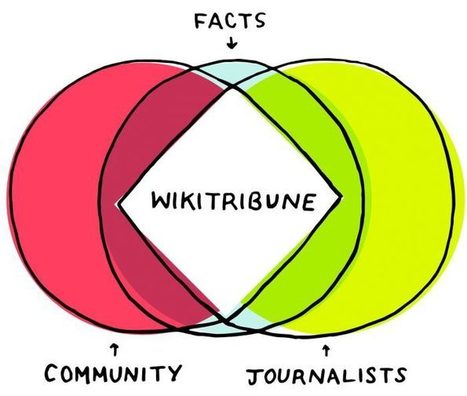




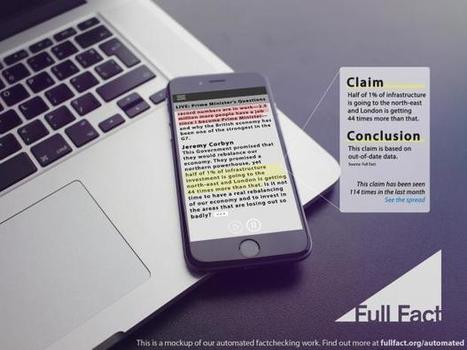




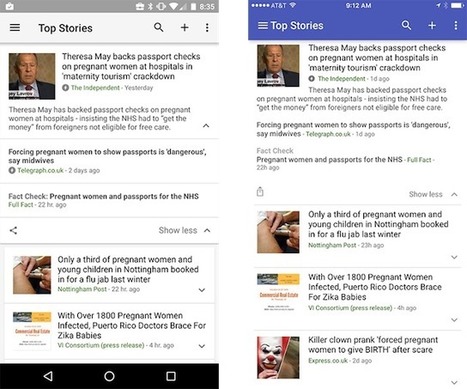
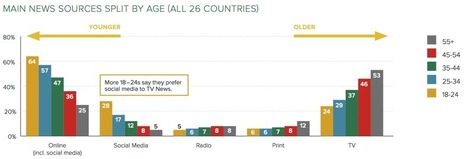
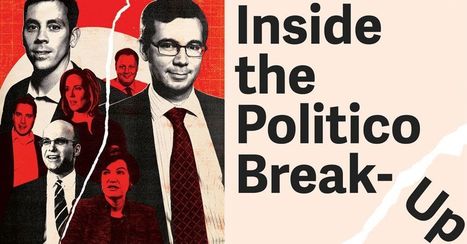
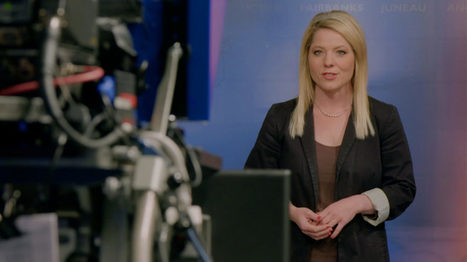

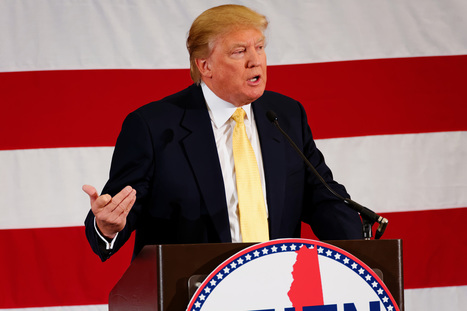
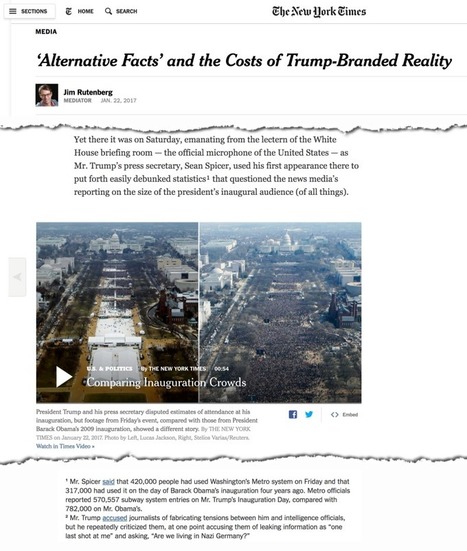








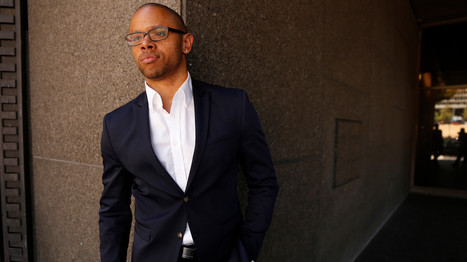





In just 10 minutes a day, you can stay on top of all the important social media news. Here are the five different ways you can choose from.